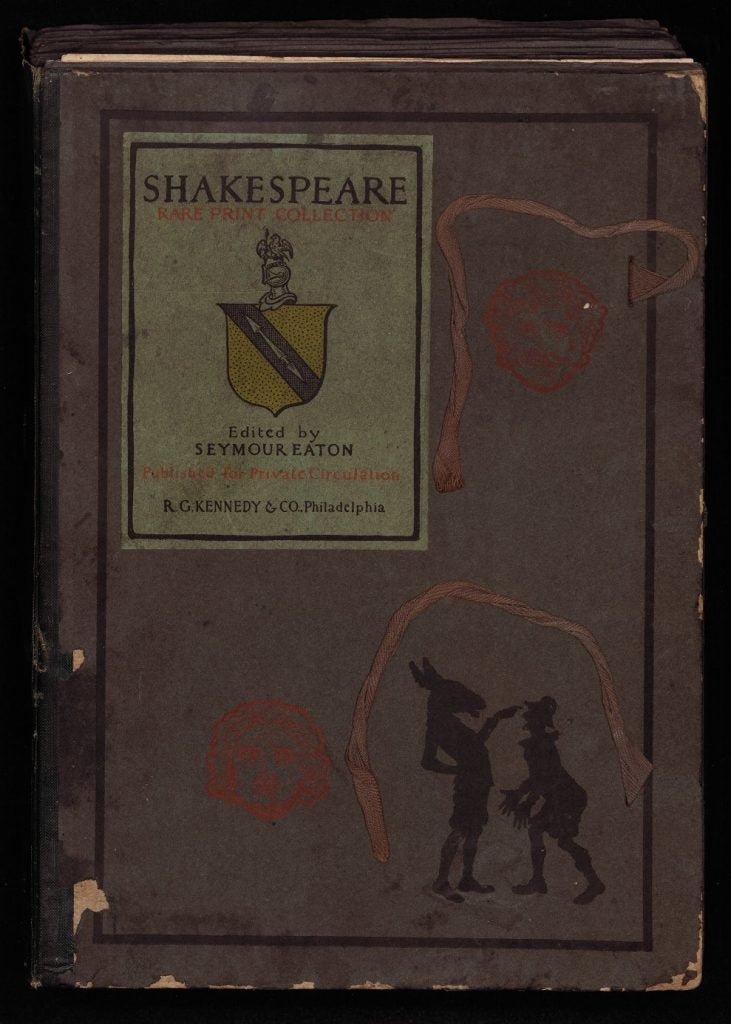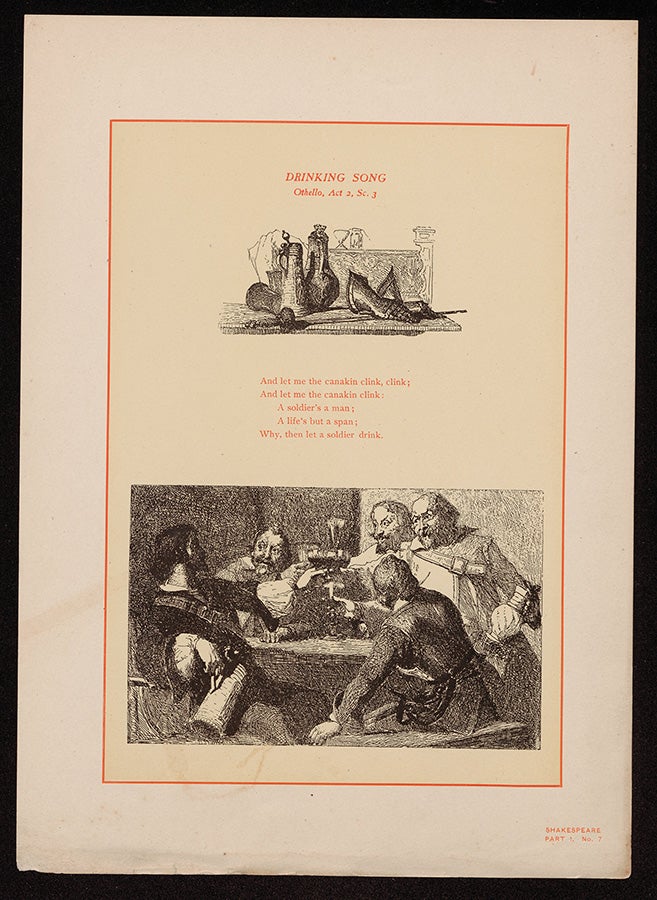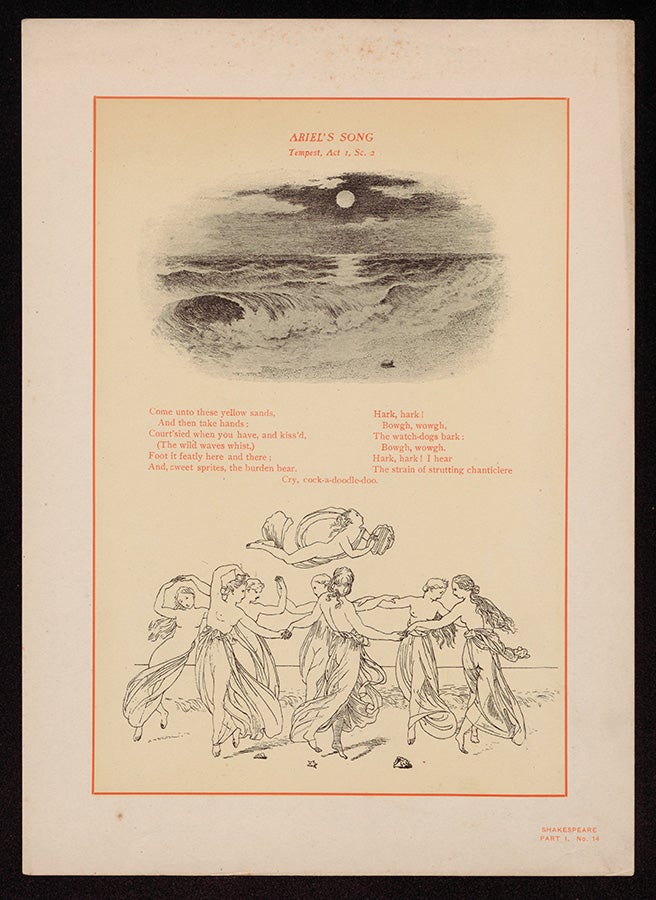The Works of William Shakespeare Illustrated
Item: Shakespeare Rare Print Collection (Joyner Rare PR2883 .S53 1900)
Staff Person: Intern Scooter Lewis
Among the books found in Special Collections, you can find rare works and materials related to writers like Shakespeare. One Shakespeare-related work in the Rare Book Collection is the Shakespeare Rare Print Collection. What’s unique about this item is that the images it contains are reproductions of prints created in 1843.
The Shakespeare Rare Print Collection (edited by Seymour Eaton) was published in 1900 by R.G. Kennedy & Co. The pages in the book aren’t bound together – it acts as a large “portfolio” that houses 12 smaller folders containing 12 prints each (except Part I which has 14). This copy, however, is missing the 12th folder and those prints have been stored in Part XI. None of the prints are bound together for the purpose of easily viewing of each individual print.
The prints in each portfolio are reproductions of works from several different art sources. They were done by a team of artists known as the Etching Club. They received their name from the printmaking technique they used to create the originals, in which acid is used to make grooves in a metal plate. The grooves in the plate can then be filled with ink and passed through a printing press. The group was founded by Charles West Cope in Victorian England.
Prior to founding the Etching Club, Cope was a highly-esteemed artist who specialized in the areas of painting and etching. In the early 1840s he was credited with creating several of the frescoes in the House of Lords located in London. He was also elected as an associate of the Royal Academy where his work and the work of the Etching Club is documented. The Etching Club was made up mostly of Royal Academy members similar to Cope and produced etchings to go along with the writings of authors such as Oliver Goldsmith, John Milton, Thomas Gray, and William Shakespeare.
Originally, these images were published in the Etching Club’s own work titled Songs of Shakespeare in 1843. The Shakespeare Rare Print Collection contains reproductions of those etchings, as well as hand-painted illustrations and playbill facsimiles related to Shakespeare’s plays. All the reproductions I selected came from Part I, which mostly has scenes from several different plays. Number 7 comes from Act II, Scene III of Othello; the original etching was done by John Prescott Knight. I like that this etching captures the jovial nature of this particular scene through attention to detail in facial features and body language.
Fellow Etching Club member Henry James Townsend originally produced Number 14 which comes from The Tempest. I particularly liked Number 14 for its clear line work. The bottom image of the spirits dancing and singing along with Ariel in Act I, Scene II clearly gives insight to how a basic etching is executed with the precise line work and amount of white space in between.
I wanted to write about the Shakespeare Rare Print Collection because of its emphasis on images for the text to work with. For someone who is first encountering Shakespeare and is unfamiliar with the language, the illustrations help put things into context.
Sources:
www.victorianweb.org/graphics/etchingclub.html.
http://www.racollection.org.uk/ixbin/indexplus?record=O9015&_IXlink=y
“CHARLES WEST COPE (Book Review).” The Spectator Dec 19 1891: 890. ProQuest. Web. 4 Dec. 2017.
http://www.avictorian.com/Cope_Charles_West.html


